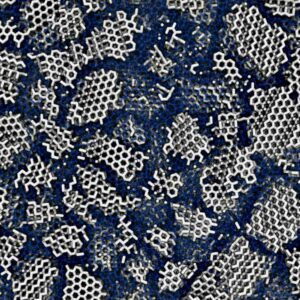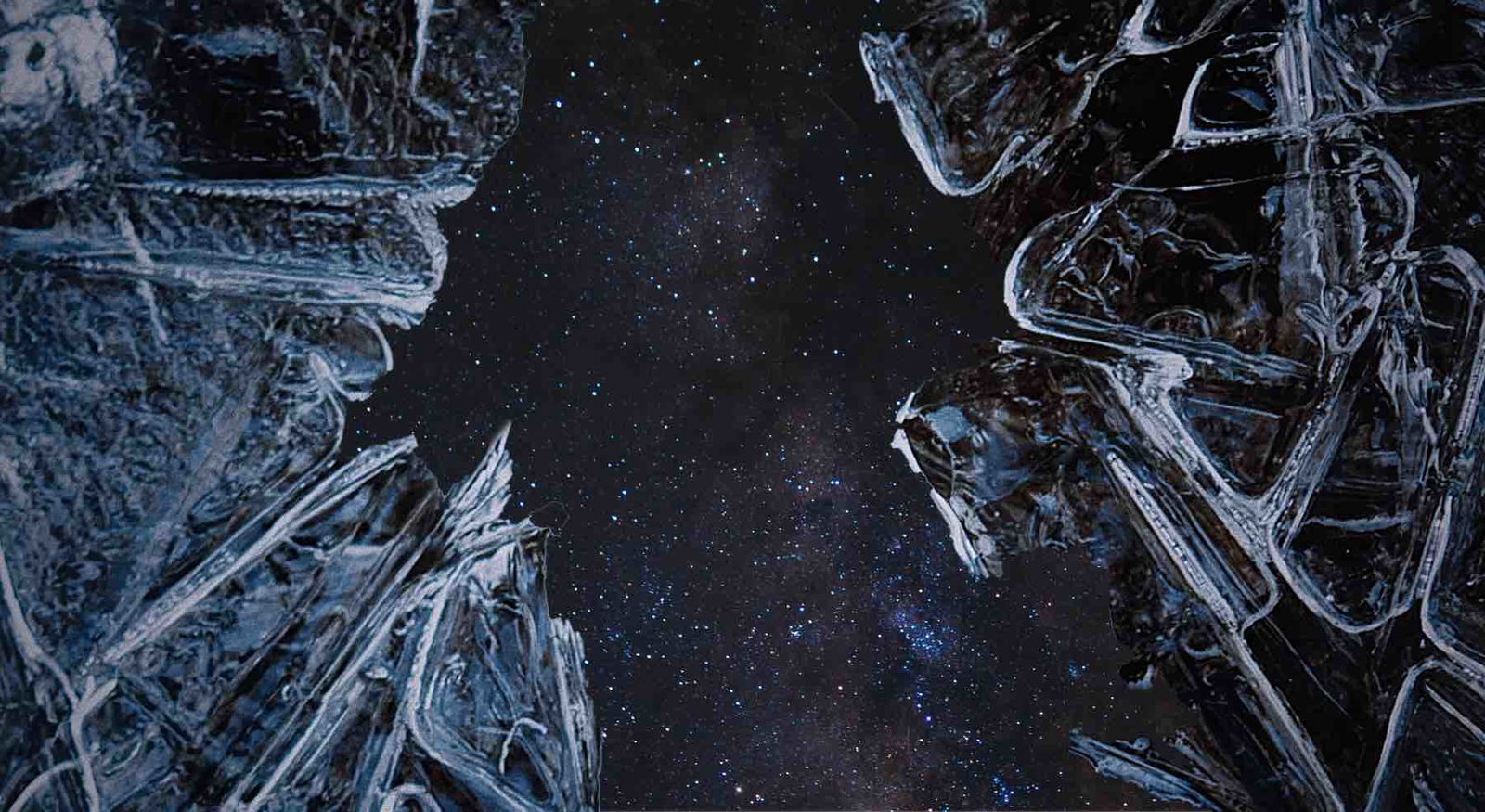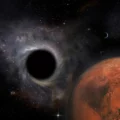Scientists studying “space ice” say the amorphous, low-density material’s structure is less similar to water than previous research has shown, decreasing the odds of theories involving a “panspermia” scenario for the origins of life.
In new research by University College London (UCL) Scientists studying the molecular composition of space ice, researchers say they have found a ratio of amorphous and crystalline structures that make it a less optimal transport material for the origin of life molecules featured in panspermia theories, suggesting life did not originate on Earth but was seeded from space.
The discovery also offers critical insights into the composition of the most common form of water ice in the universe, which can be found in comets, icy moons like Saturn’s Enceladus, and within the massive clouds of dust where stars and planets form.
Unlike ice on Earth, which has a highly ordered, crystalline structure, scientists previously assumed that space ice was amorphous, meaning it had no discernible structure. Those ideas were based on the suggestion that the ultra-cold environment of space would rob water molecules of the energy needed to form crystals when they freeze.
“Ice in the rest of the Universe has long been considered a snapshot of liquid water – that is, a disordered arrangement fixed in place,” explained Professor Christoph Salzmann of UCL Chemistry and a co-author of the study detailing the team’s findings. “Our findings show this is not entirely true.”
Simulations and Experiments Reveal Likely Structure of Space Ice
Before testing samples of actual amorphous ice, Dr. Michael B. Davies, who led the study as part of his PhD at University College London (UCL) Physics & Astronomy and the University of Cambridge, ran computer simulations of two virtual “boxes” of space ice cooled to -120 degrees Centigrade at different rates.
According to the team’s study, these two variances in freezing rate resulted in boxes containing differing proportions of amorphous and crystalline ice. When comparing their results to previous X-ray diffraction experiments on low-density, simulated space ice, the samples that were 20% crystalline and 80% amorphous were the closest match.
In a second series of simulations, the team created several large, virtual boxes filled with ice crystals packed close together. According to a statement from the team, this second simulation “disordered” the regions between the ice crystals, resulting in structures “very similar” to those of the first approach, with approximately 25% crystalline ice.
 Visual representation of the structure of low-density amorphous ice. Many tiny crystallites (white) are concealed in the amorphous material (blue). Credit: Michael B Davies, UCL and University of Cambridge.
Visual representation of the structure of low-density amorphous ice. Many tiny crystallites (white) are concealed in the amorphous material (blue). Credit: Michael B Davies, UCL and University of Cambridge.
Hoping to find experimental support for their simulations, the team used several different methods to create laboratory samples of low-density amorphous ice. These approaches included simulating the formation of space ice on interstellar dust clouds by depositing water vapor onto a freezing surface and warming a batch of high-density amorphous ice.
Once the team had sufficient laboratory-simulated space ice, they slowly heated the samples to provide enough energy to create ice crystals. This process revealed that the resulting low-density amorphous ices had differing molecular compositions, depending on the method of their formation.
The teams said this result meant that the molecules within the ice were stacked in what they described as “six-fold” arrangements. Finding these structures provides indirect evidence that low-density amorphous ice contained crystals, as the ice would not retain any memory of its earlier forms if it did not contain crystals.
Findings Reduce Odds of Panspermia Origin of Life
In the study’s conclusion, the researchers discuss the potential implications of their findings on space ice. For example, Dr. Davies noted that amorphous materials, in general, have essential uses in several advanced technologies.
“Glass fibers that transport data long distances need to be amorphous, or disordered, for their function,” he explained. “If they do contain tiny crystals and we can remove them, this will improve their performance.”
Davies said amorphous ice could also serve as a “high-performance material” for space-based applications. For example, it could provide radiation shielding for spacecraft or fuel made from hydrogen and oxygen.
“So, we need to know about its various forms and properties,” he said.
Along with material and cosmological implications, the results appear to directly impact a popular theory of the origin of life on Earth, known as the Panspermia hypothesis. In most panspermia models, the chemical “building blocks” of life are carried to Earth aboard comets, which are primarily composed of low-density, amorphous space ice. According to Davies, their findings make this theory more difficult but not impossible.
“Our findings suggest this ice would be a less good transport material for these origin of life molecules,” he explained. “That is because a partly crystalline structure has less space in which these ingredients could become embedded.”
Still, Davies thinks Panspermia could occur in low-density space ice because there are “amorphous regions” within the material, where life’s building blocks could be trapped and stored.” Ultimately, the researchers stated that their findings are significant, as ice is involved in everything from planet formation and galaxy evolution to the movement of matter throughout the universe.
“We now have a good idea of what the most common form of ice in the Universe looks like at an atomic level.,” Davies said. “This is important as ice is involved in many cosmological processes.”
Study co-author Professor Angelos Michaelides from the University of Cambridge agreed, noting that “water is the foundation of life, but we still do not fully understand it. Amorphous ices may hold the key to explaining some of water’s many anomalies.”
Christopher Plain is a Science Fiction and Fantasy novelist and Head Science Writer at The Debrief. Follow and connect with him on X, learn about his books at plainfiction.com, or email him directly at christopher@thedebrief.org.

